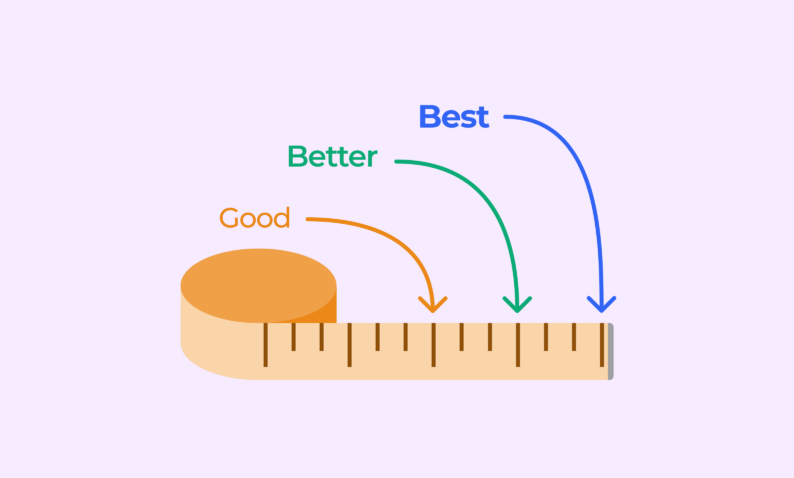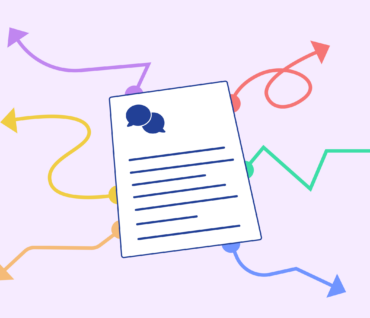
Get Started
Graphite's supplier management tool helps you onboard faster, cut time on risk reviews and streamline supplier validations. Save time and money.
January 24 2023
How to Measure the Effectiveness of Your Procurement Team
For leaders looking to run an effective and efficient procurement team, a necessary step is understanding and reporting on common KPIs that can be used to measure both supplier and team performance. Procurement teams that understand their KPIs and how to improve them can boost their return on investment (ROI). They can also better evaluate current vendor relationships and identify the next steps to improve supplier performance. We’ll talk about the top KPIs your procurement team should be tracking, how you can measure them (even the less tangible “soft” values), and how you can improve on the baselines.
Top KPIs for Procurement Teams to Track and Improve
Number of Suppliers / Vendors
The number of suppliers your organization uses over time can tell you a lot about your dependence on certain types of vendors and whether you have a need to diversify, add, or remove suppliers in any area.
Dividing this number by the types of products or services offered by the supplier can also help your team make correlations between the number and the nature of the relationship with different types of vendors. For example, if you have only one vendor in a product category, it can be seen as an exclusive relationship that may come with added benefits for loyalty and longevity. However, it can also mean that if supply runs low for physical items, getting what you need in time could prove more difficult.
Conversely, if you work with a larger number of suppliers in a given category, they might not be as willing to offer loyalty discounts or special offers.
Looking at supplier counts can help procurement teams see where they are most vulnerable to supply chain issues, where they may need to strengthen or refine relationships, and where new suppliers might need to be brought in or replaced.
Metric: Total number of vendors (Bonus: Divide by service and product type)
Availability
If you’re in a pinch, how quickly can your current suppliers respond to last-minute orders? This KPI is generally based on products, and a higher percentage will indicate a greater number of times a needed product was available at short notice. To improve this number, procurement teams might want to review other suppliers to determine whether their availability rates are better than those they currently use.
Metric: Number of times the supplier had a product available divided by the number of orders made for a product.
Compliance Rate
How often does your supplier deliver on the requirements you agreed upon previously? When you begin a relationship with a vendor, you’ll have conversations about staying on budget, delivering a certain number of products, or abiding by license terms for SaaS services. Issues with compliance can come in many different areas and can also include other KPIs such as purchase order cycle time and lead time. Therefore, calculating this will look different based on the terms you decide to track.
Improving compliance rate might involve having conversations with suppliers about terms not being met, shopping around for alternatives, improving the supplier onboarding process, and offboarding vendors that have the lowest compliance rates.
Many smaller KPIs can fall under compliance rate, including purchase price variance, delivery success rates, and invoice dispute ratios.
Metrics could include the number of disputed invoices versus total issued invoices, the difference between quoted and paid price, the total number of orders made versus delivered, the accuracy of what was on the invoice versus what arrived, etc.
Lead Time and Purchase Order Cycle Time
Related but not identical, lead time and purchase order cycle time examine different parts of the order process. The shorter-range KPI is purchase order cycle time, which starts with the request and ends when the order is confirmed. Lead time is measured as the time it takes between order placement and delivery. Lower numbers for these are generally better, but only as long as quality doesn’t subsequently decrease.
Procurement teams can set internal goals for both purchase order cycle time and lead time to see which vendors aren’t confirming and delivering in a timely manner. If a supplier is consistently not up to your time standards, improving the KPI can involve reiterating the expectations, working with the supplier, and perhaps, going with another supplier.
Metrics: Number of days.
Defect Rate
As mentioned previously, you don’t want quality to go down with lead time, but if it does, it can often be reflected in the defect rate. This can be determined by comparing the number of defects found in a shipment to the total number of items delivered and inspected. It may also be worth a procurement team’s time to categorize defects into types, especially if it means the most egregious defects don’t make it through any longer.
Metric: Number of defects found in a shipment versus total number inspected. It could be looked at as defects per million.
Emergency Purchases
Just because emergencies are unexpected doesn’t mean that all emergency purchases are necessary or unavoidable. Sometimes, purchases can feel like emergencies but could be better managed with pre-existing vendor relationships, product or service-purchasing policies, or a few days of grace to make some evaluations.
Emergency purchases can drive up spend due to faster turnarounds for needed products or services, higher shipping costs for smaller orders, or in the case of SaaS products, not enough time to negotiate or form a relationship with a vendor. They can also coincide with maverick spending, where the member of another team might not know about established relationships and potential discounts the organization could get, even in an ad hoc ordering situation.
Look at this number year-over-year to see if the percentage of emergency purchases has increased. If so, your procurement team may need to communicate more effectively with teams on how to make purchases or refine your policies and processes for requesting products and services.
Metric: Number of emergency purchases divided by the total number of purchases made.
Spend Under Management
A related KPI to emergency purchases is spend under management. What spend on products and services is being managed by the procurement team compared to outside teams? This could include emergency or non-emergency maverick spending. Determining the ratio for spend under management can help the procurement team identify which departments or teams may require additional training on proper protocol to control spending.
Metric: Spend managed by the procurement team versus spend managed outside the procurement team.
Purchases in Time and On Budget
When reviewing the purchases made on time and on budget, procurement teams are really reviewing a combination of other KPIs: Lead time, purchase order cycle time, compliance rate, availability, etc. This can be a multi-layered way to look at vendors and gain a holistic view of how well your team is doing and how well suppliers are performing. Budget issues can come from the procurement team not weighing their options enough, but it can also come from quoted prices coming out different from what is billed, for example. Looking at multiple factors in one place could help you answer a question that has eluded you when examining KPIs one by one.
Procurement ROI
Finally, how well is your procurement team providing a strong return on investment? There are a few KPIs that fall under this category: Cost avoidance, cost reduction, and overall ROI.
Cost avoidance evaluates how often the procurement team is avoiding extra costs. What are the preventative, strategic measures being taken to keep from spending in a way that isn’t necessary? Tactics could include alternative sourcing, process improvements, proactively replacing or repairing equipment before it breaks and costs more to recover, and so on. One problem with cost avoidance measures is they’re often hard to track. They’re seen as “soft savings” that don’t easily end up on a spreadsheet.
Metrics: Take notes on cost avoidance measures throughout the year and estimated value to the bottom line. This will get easier to predict over time.
Cost reduction leads to more “hard savings” that can be seen on the bottom line. It answers the question: What are the new costs of products and services being used compared to the old costs, and how much have they reduced?
Metric: Cost of old products/services minus cost of new for total savings. It can also be helpful to categorize the method of savings (contract negotiation, vendor switch, contract term changes, etc.).
Finally, overall ROI should show how much your procurement team drives savings annually. Ideally, as the years go by, the relationships and negotiations the team has made should allow for the savings to increase, or at least remain stable. This is one of the most direct team evaluations and one of the best ways to assert value to leadership.
Metric: Total amount saved by the procurement team divided by the cost to run the team.
Improve the Effectiveness of Your Procurement Team
One of the biggest ways your procurement team can become more effective is by buttoning up your processes. From intake, to risk & due diligence, to relationship and data management, Graphite Connect allows buyers to onboard and manage suppliers in a smarter, more efficient way. Automate your processes, avoid unnecessary errors, and improve your KPIs in one fell swoop.
Ready to Learn More?
To learn more about supplier-managed data, effective supplier information management, and more, schedule a time to meet with one of our experts.
Request a Demo




